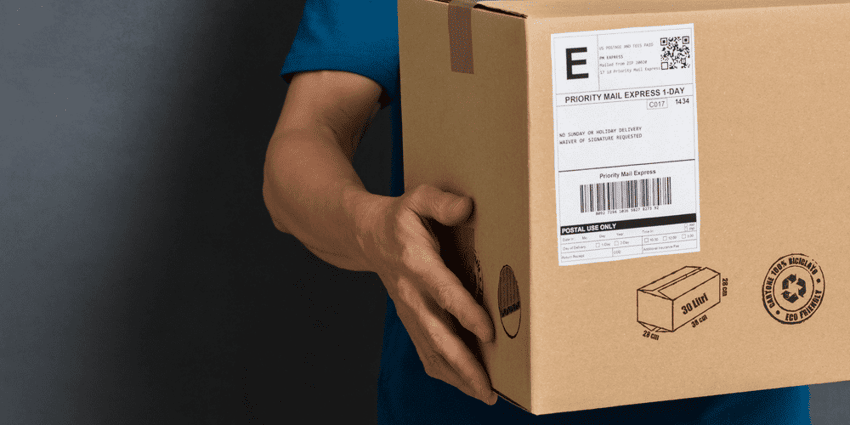In our last article, we covered all the different types of shipping label printers out there, from your basic Inkjet to the Industrial Label Printers. This time round, we're going to talk more in depth about Thermal Label Printers. They're generally considered the better option for businesses who are starting to experience more serious growth. In this guide, we'll compare a few different desktop models at different price points.
What is a Thermal Label Printer?
Before we get into the comparison portion of this article, it's important to understand what a Thermal Label Printer is. Thermal Label Printers are a specific type of printer that prints labels by melting wax or ink onto paper or tape. There are two types of thermal printers:
- Direct thermal printers
- Thermal transfer printers
In a simplistic manner, the two types can be differentiated by price, size and durability.
| Thermal transfer printers | Direct thermal printers | |
| Size | Typically have a large footprint, closer to a regular Inkjet printer | Usually has a small footprint, able to sit comfortably on a desk |
| Cost | A higher start up cost, usually starting from $1000 upwards | A lower start up cost, usually starting from $450 |
| Color | Can print in both color and black and white as long as you have the right ribbon | Most can only print in black and white (monochrome) |
| Durability | Labels last longer, and used in Industrial environments | Labels are prone to fading due to light exposure |
How do you use a Thermal Label Printer?
As you can imagine, the two different Thermal Label Printers function slightly differently to each other. The difference can be found in the way that they produce an image.
Thermal direct
Thermal Direct printing is a digital printing process where the printed image is produced by heating special thermal paper as it passes over the thermal element of the printer. The coating turns black in the areas where it is heated, producing the intended text or image.
Thermal transfer
Thermal transfer technology uses a heat-sensitive carbon ribbon, rather than heat-sensitive paper. The ribbon is melted onto the label which forms the text or image on the surface. Thermal Transfer labels are generally tougher in nature, making them less likely to scratch or fade, especially when exposed to light or higher temperatures.
Points to consider before purchasing
Choosing the right thermal label printer for your business can be broken down into the following four points (all to do with how your business operates):
- Daily volume: How many labels are you printing per day?
- Printer capacities: What is the label capacity of your chosen printer?
- Footprint: What is the size of your printer?
- Label size: What size labels can your printer print?
- Affordability: What is your budget?
What printer resolution do you need?
The sharpness of a print (or printer resolution) is measured in Dots Per Inch. The higher the DPI figure the sharper the text. If you're printing just shipping labels or labels where appearance isn't too important, we recommend a printer with 203 dpi. Otherwise the standard dpi you should go for is 300 dpi.
- Use a 203 dpi printer for labels where appearance isn't important
- Use a 300 dpi printer where your label appearance is important, and/or you're using a small font
- Use a 600 dpi printer if you have very small barcodes to print
DYMO LabelWriter 4XL
The DYMO LabelWriter 4XL is a popular choice for small businesses shipping out up to 50 orders per week. It's on the cheaper end of the spectrum, and you can pick one up for $298 from Officeworks.
Pros
- Inexpensive start up cost
- Small footprint on desk
- Can print for a variety of courier services including FedEx
- It can produce labels up to 108mm wide
Cons
- Prints relatively slowly compared to the Brother QL810W, at 55 labels per minute
- You have to purchase thermal printing labels, which cost roughly $127.27 per 1000 labels
DYMO have recently released a wireless version of the DYMO LabelWriter that essentially does the same thing as the DYMO LabelWriter 4XL, but can operate wirelessly. This comes in at $199.00 Officeworks and can print 71 labels per minute, but you're limited to a specific size of label.
Brother QL-820NWB Professional Label Printer
The little cousin of the DYMO, the Brother QL-820NWB comes in at $255 online. It too, has a small footprint, weighing just 1.6kg.
Pros
- Inexpensive start up cost
- Small footprint on desk
- Prints in 300 dpi resolution
- Able to print wirelessly from your mobile or laptop
- User-friendly control pad, with cutter and cancel button
- Fast printing at 110 labels per minute, with a width of 58 mm
- Prints in black and red
Cons
- Purchasing labels is somewhat costly
Brother QL1110NWB
If your store is starting to make a good profit and shipments are steadily increasing, then we recommend investing in a Brother QL1110NWB. It requires a decent investment from your end, starting from $649 from Amazon Australia
Pros
- Auto-crops your label if the sizing is too small
- Able to print wirelessly from your mobile or laptop
- User-friendly control pad, with cutter and cancel button
- Comes with a great label software
Cons
- A little slow, can only print 69 labels per minute
Rollo Thermal Label Heavy Duty Printer
The Rollo Thermal Label Printer comes in around the same price, starting at $649 from Amazon Australia.
Pros
- Quick printing speeds
- Easy and fast setup
- Compatible with third-party softwares
Cons
- Does not have an internalized roll holder. THe roll must feed into the printer from behind, so you'll need ample desk space
- Some people have experienced technical issues with this printer
Are there any ongoing costs associated with a Thermal Label Printer?
The number one item that you're going to be purchasing to keep your printer operational are label rolls. These can go anywhere from $20 to $170 depending on the type of machine you're using and its compatibility. Other key consumable parts include the platen roller and the print head, which due to normal wear and tear will need to be replaced, eventually. The cost of which will depend on the brand of printer you've purchased










 Facebook
Facebook Twitter
Twitter Instagram
Instagram Linked In
Linked In YouTube
YouTube